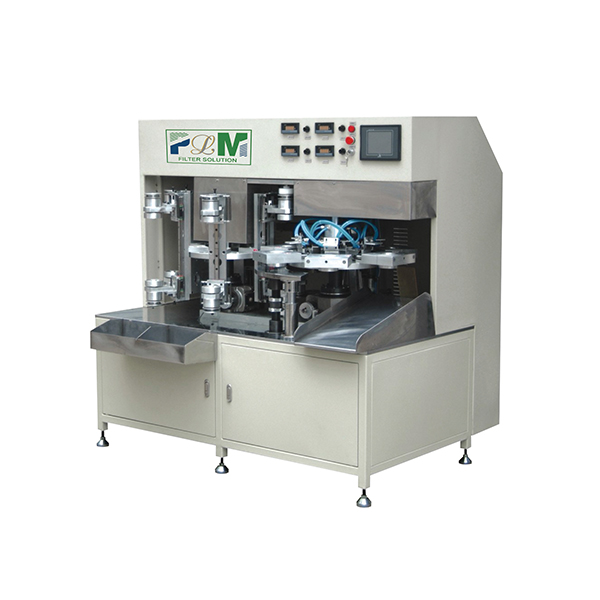ធ្នូ . 21, 2024 18:44 Back to list
filter paper making machines
The Evolution of Filter Paper Making Machines A Technological Perspective
In the realm of paper production, filter paper has carved out a significant niche due to its diverse applications and critical role in various industries. The machines that manufacture filter paper have evolved tremendously over the years, driven by advancements in technology, increasing demand for high-quality products, and a growing focus on sustainability.
Understanding Filter Paper
Filter paper is a semi-permeable paper used for filtration and separation purposes in laboratories, food industries, pharmaceuticals, and environmental testing. Its primary function is to separate solids from liquids, providing a means for analysis or a physical barrier to contaminants. The specifications of filter paper vary based on its cellulose content, thickness, porosity, and absorbency, making it essential for manufacturers to tailor their production processes according to specific requirements.
The Mechanics of Filter Paper Making Machines
Filter paper making machines are engineered for precision and efficiency. The primary components of these machines include a pulp preparation system, a forming section, a pressing section, and a drying section.
1. Pulp Preparation This is the initial stage where raw materials, primarily cellulose fibers, are prepared. The pulp is processed through various treatments to ensure it meets quality standards, including bleaching and refining. Advanced machines now employ chemical and mechanical treatments that improve the quality and yield of the pulp.
2. Forming Section In this phase, the prepared pulp is spread onto a moving wire mesh to form a continuous sheet. Modern machines utilize sophisticated techniques to control the uniformity of pulp distribution, ensuring consistency across the paper. The use of computer-controlled systems allows for real-time adjustments that enhance the quality of the filter paper.
3. Pressing Section After the sheet is formed, it goes through pressing to remove excess water, which is crucial to achieving the desired thickness and density. Hydraulic or mechanical presses are utilized, and innovations in this area have led to energy-efficient solutions that minimize waste.
filter paper making machines

4. Drying Section The final step in filter paper production involves drying the pressed sheets. This is often accomplished with heated cylinders or infrared drying systems, which ensure that the final product has optimal moisture content. Because excessive moisture can affect the filtration properties of the paper, precise control during this phase is vital.
Technological Advancements
The evolution of filter paper making machines has been marked by significant technological advancements over the years. Automation has become a hallmark of modern production lines, allowing for enhanced efficiency, reduced labor costs, and greater consistency in product quality. Smart sensors and IoT technology enable real-time monitoring of machine performance, facilitating maintenance and operational adjustments without significant downtime.
Sustainability has also become a focal point in the design and operation of filter paper manufacturing. Many manufacturers are now employing eco-friendly practices, such as using recycled materials and minimizing water usage during production. Energy-efficient machinery is also a trend, as manufacturers strive to reduce their carbon footprint and adhere to stringent environmental regulations.
Market Trends and Future Directions
The demand for filter paper is expected to grow, driven by increased usage in laboratories and industrial applications. This trend is propelling manufacturers to innovate continuously and improve the efficiency of filter paper making machines. The integration of artificial intelligence in production processes could lead to even smarter machines capable of optimizing production parameters on the go.
Moreover, the rise of alternative materials and methods could challenge the traditional paper production industry. However, the versatility and effectiveness of filter paper ensure that it will remain a staple in various sectors.
Conclusion
The journey of filter paper making machines has been one of continuous innovation and adaptation to meet the changing demands of the market. As industries strive for higher quality and sustainable practices, these machines will undoubtedly evolve further, shaping the future of filter paper production. Embracing technological advancements while focusing on sustainability will be key to success in this dynamic landscape.
-
Active Carbon Air Filter for Air Purifier: Odor & VOC Control
NewsAug.25,2025
-
Premium Active Carbon Air Filter for Purifiers | Odor & VOC Removal
NewsAug.24,2025
-
Premium Active Carbon Air Filter for Air Purifier | Odor & VOC Removal
NewsAug.23,2025
-
Active Carbon Air Filter for Air Purifier - Superior Odor Removal
NewsAug.22,2025
-
Premium Active Carbon Air Filter for Air Purifiers - Odor Removal
NewsAug.21,2025
-
Premium Acrylic-Resin Air Filter Paper in Roll | High Efficiency
NewsAug.19,2025
